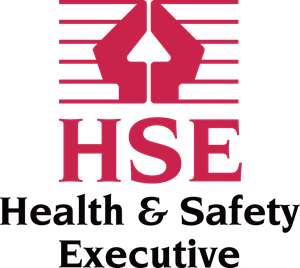The Health and Safety Executive (HSE) has recently published a 10-year strategic plan “Protecting People and Places” to build on the U.K.’s excellent safety record, and to expand its responsibilities.
After being heavily criticised for its faltering response during the first year of the pandemic, the HSE wants to ensure that its future focus is better targeted and more wide-ranging. A tough balancing act.
It’s five key objectives are listed as:
- Reducing work-related ill-health, especially mental health and stress.
- Making sure that the public feels “safe where they live, where they work, and in their environment”.
- Ensuring that health and safety legislation does not prevent innovation and progress.
- Maintaining the UK’s exceptional safety record by “learning from evidence and past events to protect people”.
- Ensuring that the HSE attracts and retains a highly skilled and capable workforce.
These are very grand aims. And, according to the HSE, they reflect the changing world of work and legislation. Among other things, they will be establishing a Building Safety Regulator, and take on more responsibilities for chemical regulation.
Mental Health
As part of their first objective, they have said they will treat mental health as seriously as physical health, and will be looking at the actions of employers in this regard. They see this as especially important when there is so much coverage in the media regarding mental health, stress and depression, particularly following the pandemic.
This work has already begun – Sarah Newton, Chair of the HSE Board, said ‘We worked with and listened to experts from MIND, ACAS and the Federation of Small Businesses, and last month achieved the milestone of 500 champions for our campaign to increase awareness of the risks of work-related stress and encourage businesses to take action.’
500 champions are all well and good, but many of these are fundamental problems, going to the heart of organisations. The danger is that people will just train and appoint Mental First Aiders thinking this is sufficient, when it is invariably just a sticking plaster on a festering wound.
Change of Direction
It is also worth pointing out that this is a significant change of direction for the Executive, as previously Inspectors appeared to rather shun the notion of Mental Health falling within their domain. And their second aim, concentrating on the home and the environment, as well as the workplace, is a considerable widening of their focus.
Commentators have pointed out that this has been brought about, in part, by the Grenfell enquiry, and it is worth remembering that it was 5 years ago this month that this terrible tragedy occurred. For the Grenfell survivors and relatives, they feel that they are still a long way away from achieving justice for loved ones lost.
But, the pandemic has also changed how individuals feel about their safety and their attitude towards risk, both at home and in work. And hybrid working means that the lines between home and the workplace are increasingly blurred.
People tend to feel safer working in their own homes, but familiarity can breed contempt. As an example, the HSE has reported a significant rise in musculoskeletal disorders (MSDs) in the last year alone, arising mainly from poor ergonomic home workstations.
The passing of the Building Safety Act 2022 very recently means that they can now establish a regulator to concentrate exclusively on the building industry. They claim this is the sector with the biggest issues and the highest number of fatalities, outside of road traffic accidents. So, it needs its own regulator that understands the issues.
Its last aim, to recruit a high-class workforce will very much be determined by the market. Every employer knows how difficult it is to recruit at present, will the HSE be able to attract and retain the necessary experts?
Laudable Goals
Alongside its stated objectives are 6 goals that they say will drive their strategy up to 2032. Their goals for the HSE are:
- It remains relevant by keeping its regulatory framework under continual review.
- As a fair and just regulator, it will target higher-risk activities and poorer performing employers.
- It will be people-focused.
- It will take a collaborative approach.
- To remain financially viable, it will combine cost recovery and Government funding to guarantee the right level of investment.
- It will be accessible, developing its digital capability and employing new technologies at its disposal.
These are laudable and worthy aims and make perfect sense. But the proof of the pudding is in the eating, or in the HSE’s case, in the implementation.
And, for an organisation that had never been needed more than in the pandemic, its response was disappointing. And many, including us, accused them of “going missing in action”, seemingly judging the work environment too dangerous to risk their own inspectors in the field. And, only producing relevant documentation for employers to use months after industry bodies, like IOSH, had already produced their own, that were of far better quality and practical to use than the HSE guidance.
As the saying goes, actions speak louder than words, and the HSE has had a lot of missed opportunities over the last few years. They now need to catch up if they want to still remain a credible institution, as well as being a regulatory enforcer.
Our consultants would be pleased to advise you on any element of the issues arising from this newsletter.


